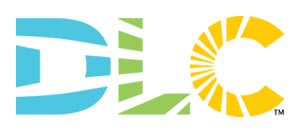 MEDFORD, MA – The DesignLights Consortium (DLC) this week issued a Request for Proposals (RFP) seeking consultant services to develop a method for quantifying the financial value of non-energy benefits of advanced building controls. The deadline for RFP responses is March 1 and the DLC expects to award a contract for the work by March 12.
MEDFORD, MA – The DesignLights Consortium (DLC) this week issued a Request for Proposals (RFP) seeking consultant services to develop a method for quantifying the financial value of non-energy benefits of advanced building controls. The deadline for RFP responses is March 1 and the DLC expects to award a contract for the work by March 12.
“We know from anecdotal reports that advanced building controls can boost savings for facility owners and managers, as well as improve the experience of building occupants. The scope of the non-energy benefits of these systems is not adequately represented in the financial decision-making process by individual owners and managers, or by energy efficiency incentive programs, however,” DLC Executive Director and CEO Christina Halfpenny said. “This project will develop a method for determining the financial value these benefits provide to occupants, managers and society, as a way to better inform decision-making with regard to investments in advanced controls.”
The DLC envisions that energy efficiency (EE) programs would incorporate the methodology resulting from this project into their incentive program evaluation methods. The DLC plans to promote the methodology to its member organizations (electric utilities and EE programs across the US) and to facility owners and managers to encourage investment in advanced controls.
Non-energy benefits associated with advanced building controls include improved occupant productivity and comfort, reduced maintenance, improved space utilization and lower carbon emissions. Among the technologies included in the project scope is networked lighting control (NLC), which DLC research has shown can increase the energy efficiency of lighting projects by an average of about 50 percent above savings possible with LEDs alone. Installed with LED lighting throughout a building’s ceilings, NLCs can also enable numerous smart building functions. With the value of these non-energy functions not adequately quantified, the true value of NLCs is obscured, contributing to low adoption rates – currently comprising less than one percent of all commercial luminaires in the US, according to the Department of Energy.
In addition to interior building NLC systems, “advanced controls” covered by the DLC project include:
- Control of lighting in adjoining outdoor spaces such as parking lots, walkways and entrances;
- Integration of building systems allowing information to be shared between NLCs and other building systems;
- Building IoT that provides data about the conditions within a building;
- Analytics applications that collect information from building systems.
The study’s four focus areas are office buildings, hospitals and health care facilities, educational buildings, and warehouse and light industrial facilities – the common thread being that occupants of these spaces are recurring, rather than transient, users.
Complete details of the proposed study, its scope, timelines and RFP response requirements are on the DLC website. The DLC will accept questions on the RFP via email to dpaton@designlights.org through February 24.
Tagged with DLC, lightED